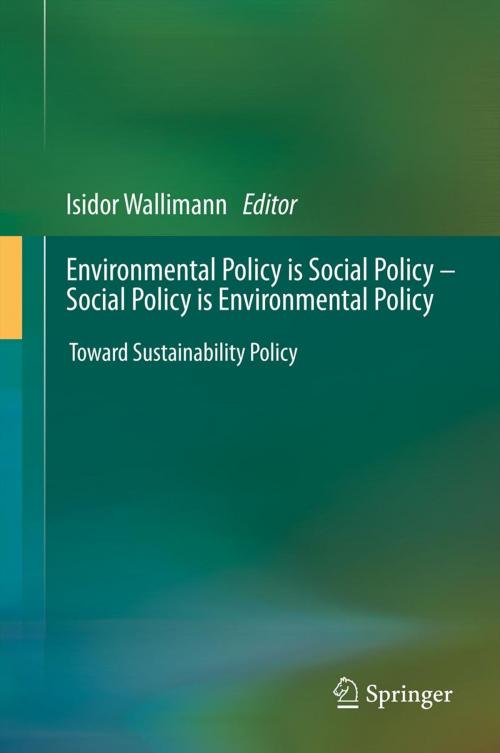Environmental Policy is Social Policy – Social Policy is Environmental Policy
Toward Sustainability Policy
Nonfiction, Reference & Language, Law, Environmental, Science & Nature, Science, Biological Sciences, Environmental Science| Author: | ISBN: | 9781461467236 | |
| Publisher: | Springer New York | Publication: | July 8, 2014 |
| Imprint: | Springer | Language: | English |
| Author: | |
| ISBN: | 9781461467236 |
| Publisher: | Springer New York |
| Publication: | July 8, 2014 |
| Imprint: | Springer |
| Language: | English |
This book argues that social and environmental policy should be synthetically treated as one and the same field, that both are but two aspects of the same coin – if sustainability is the goal. Such a paradigm shift is indicated, important, and timely to effectively move towards sustainability. This book is the first to take this approach and to give examples for it. Not to synthetically merge the two fields has been and will continue to be highly insufficient, inefficient and contradictory for policy and public administration aiming for a transformation towards a sustainable world. In general, social problems are dealt with in one “policy corner” and environmental problems in another. Rarely is social policy (at large) concerned with its impact on the environment or its connection with and relevance to environmental policy. Equally, environmental problems are generally not seen in conjunction with social policy, even though much environmental policy directly relates to health, nutrition, migration and other issues addressed by social policy. This book intends to correct the pattern to separate these very significant and large policy fields. Using examples from diverse academic and applied fields, it is shown how environmental policy can (and should) be thought of as social policy – and how social policy can (and should) simultaneously be seen as environmental policy. Tremendous benefits are to be expected.
This book argues that social and environmental policy should be synthetically treated as one and the same field, that both are but two aspects of the same coin – if sustainability is the goal. Such a paradigm shift is indicated, important, and timely to effectively move towards sustainability. This book is the first to take this approach and to give examples for it. Not to synthetically merge the two fields has been and will continue to be highly insufficient, inefficient and contradictory for policy and public administration aiming for a transformation towards a sustainable world. In general, social problems are dealt with in one “policy corner” and environmental problems in another. Rarely is social policy (at large) concerned with its impact on the environment or its connection with and relevance to environmental policy. Equally, environmental problems are generally not seen in conjunction with social policy, even though much environmental policy directly relates to health, nutrition, migration and other issues addressed by social policy. This book intends to correct the pattern to separate these very significant and large policy fields. Using examples from diverse academic and applied fields, it is shown how environmental policy can (and should) be thought of as social policy – and how social policy can (and should) simultaneously be seen as environmental policy. Tremendous benefits are to be expected.















